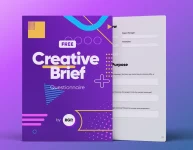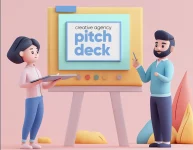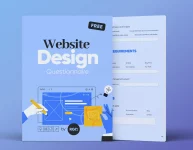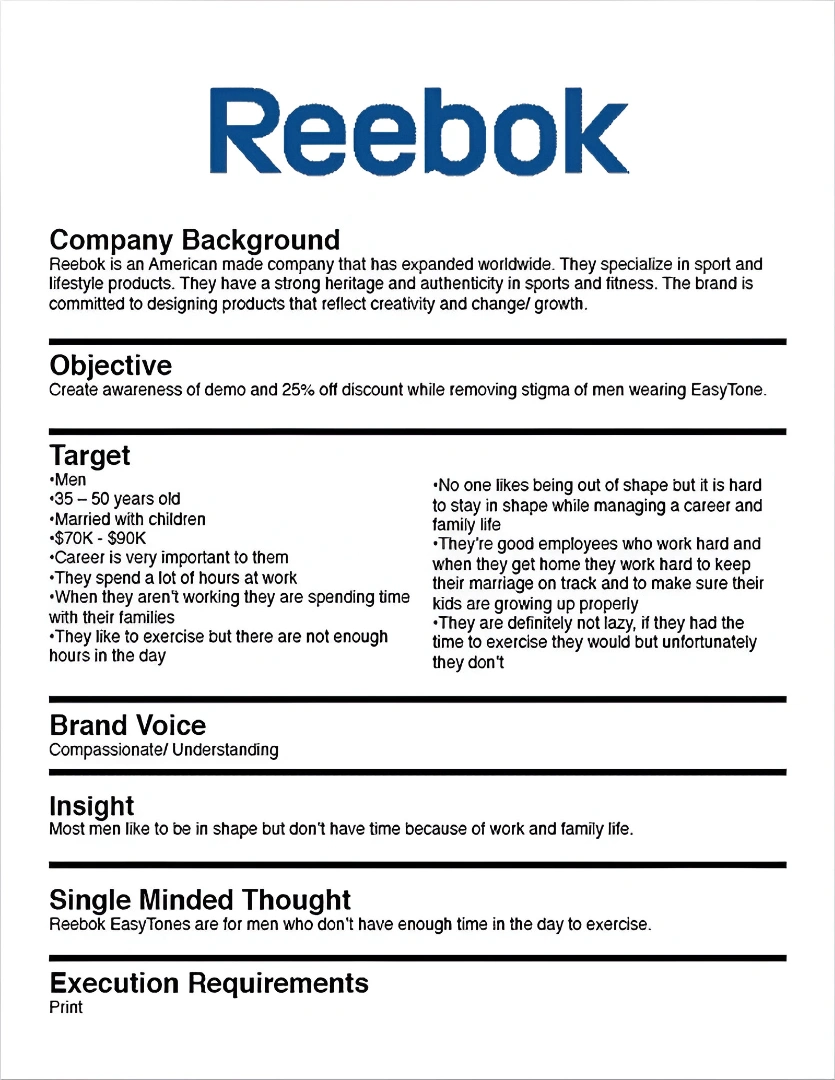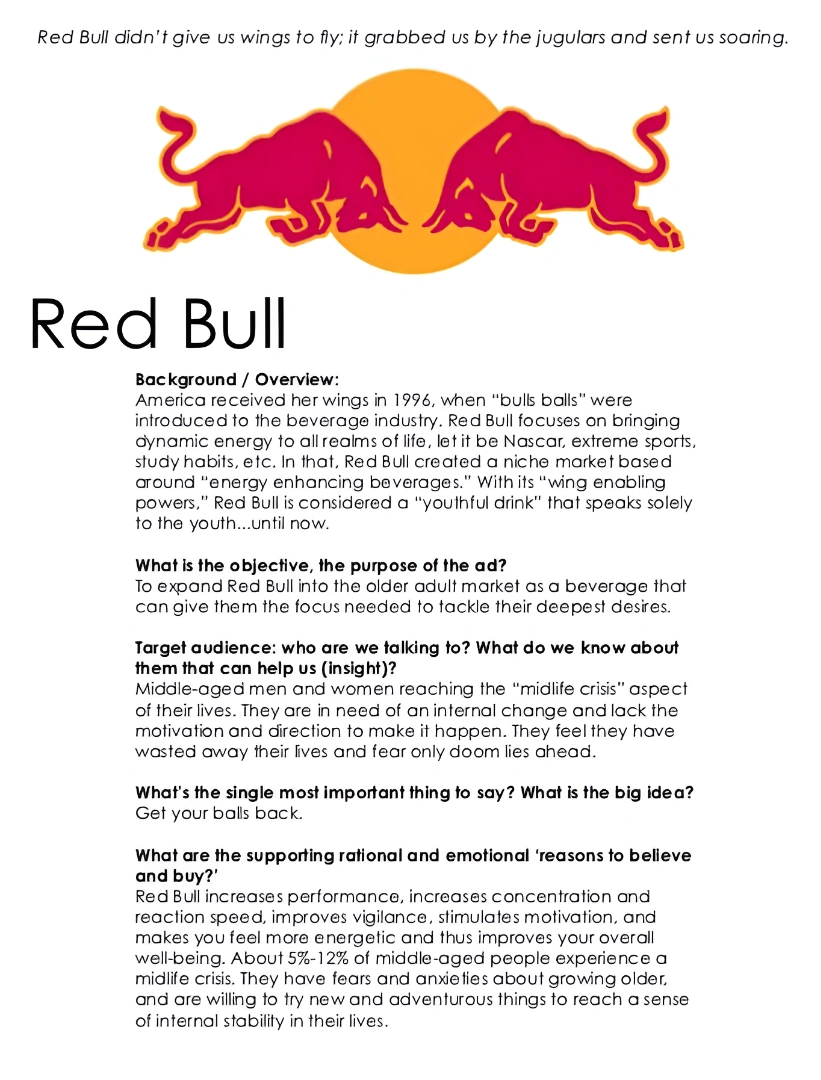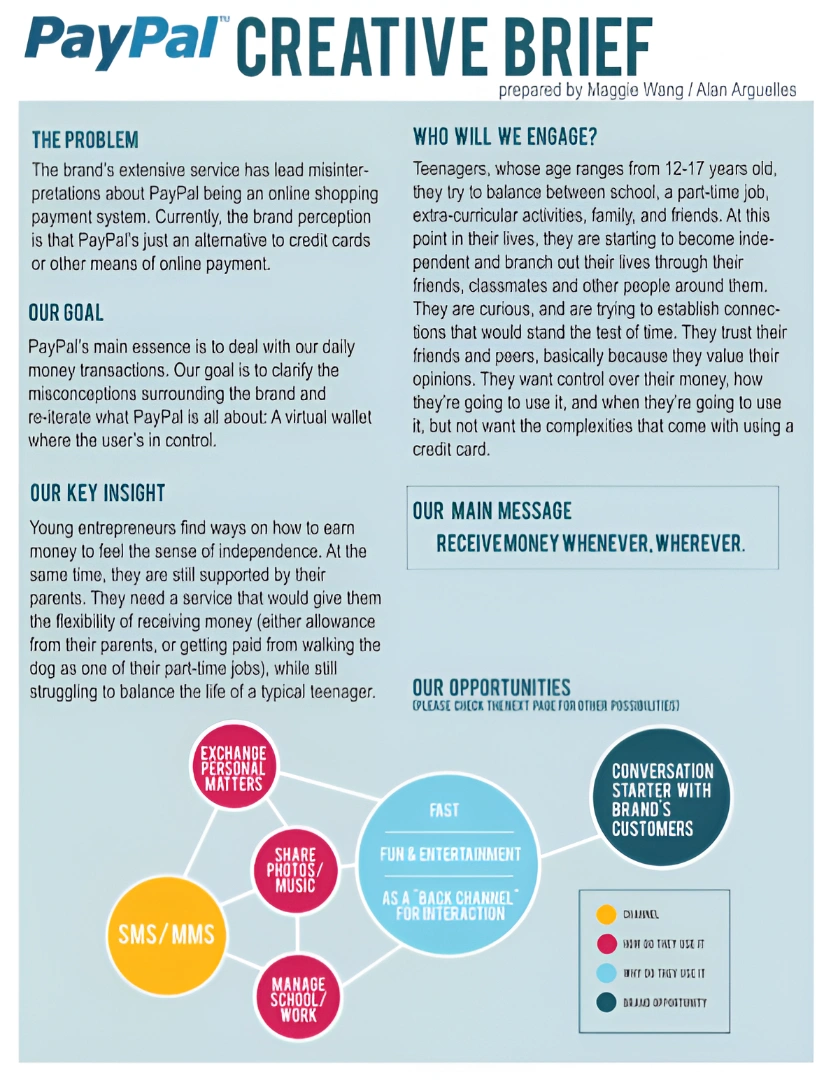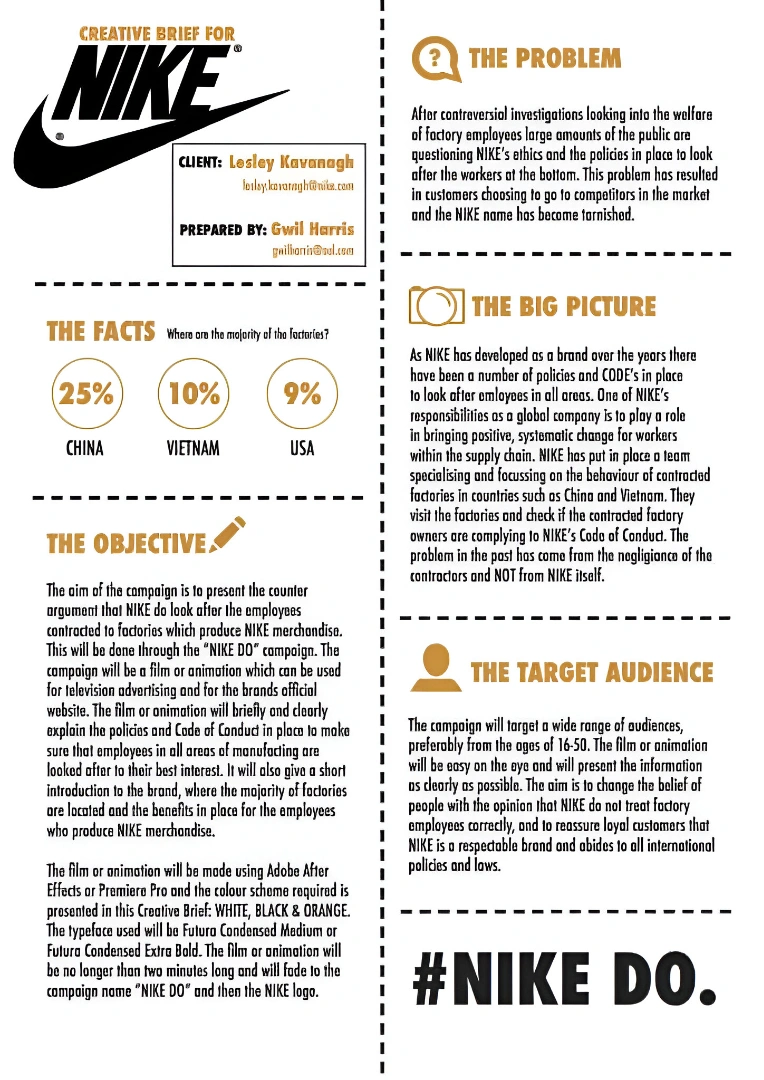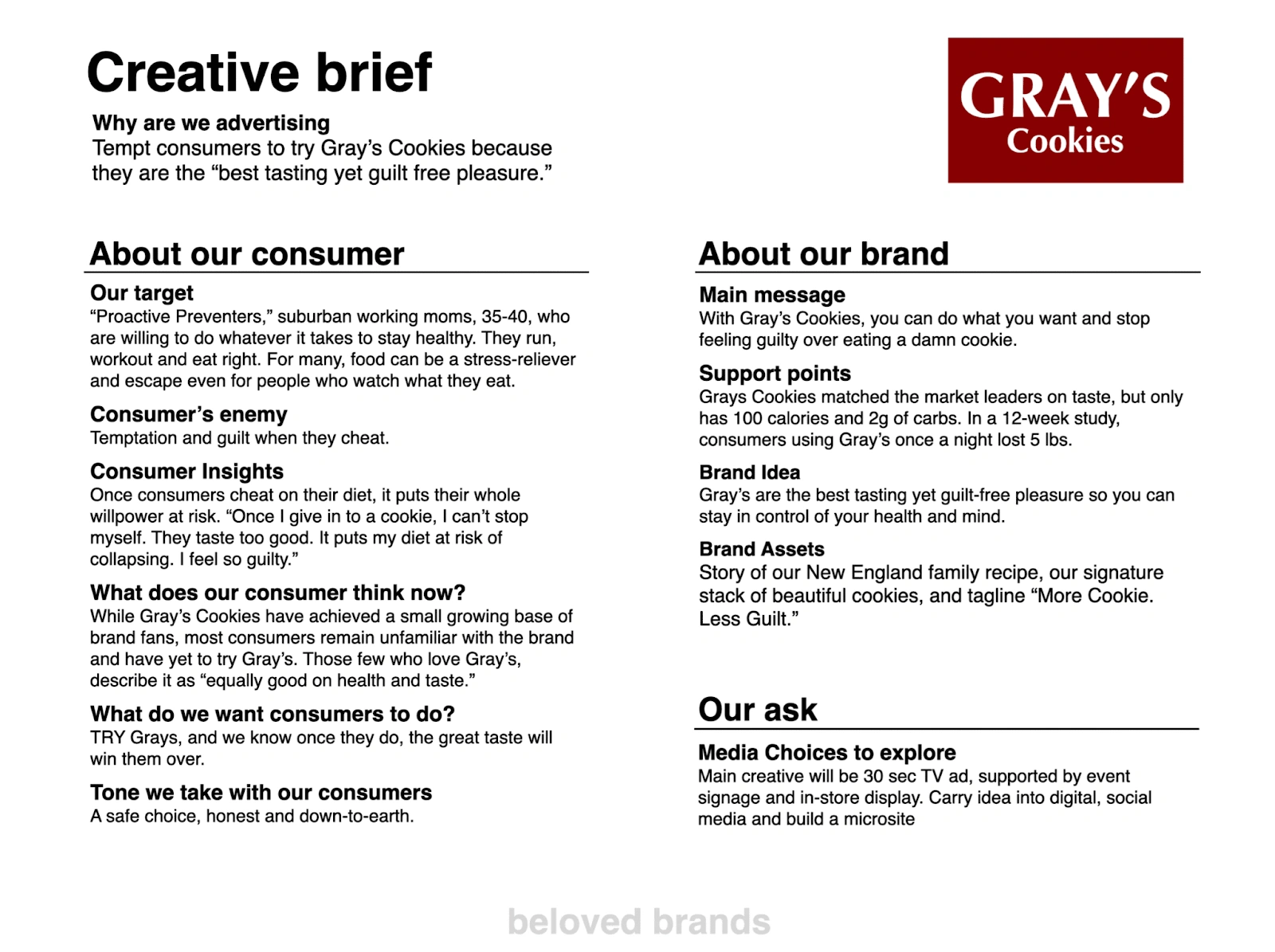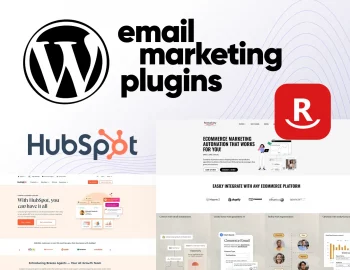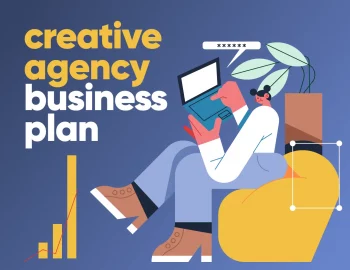Getting excited for a project is often easier than getting a project started on the right foot. You’ve probably already faced it – clients have big ideas (but sometimes struggle to articulate them), creatives crave direction (but don’t want to be boxed in), and deadlines? Well, they don’t wait for anyone. That’s where creative briefs come in, and that’s why it’s truly important to know how to write an effective one.
So today I’ll dive with you into the secrets of how to write an effective creative brief and what key components to include. I’ll also share a few examples and a customizable free template to use anytime you need it. Let’s begin by briefly covering the basics now so we’re all on the same page.
Need a head start for your next creative project?
If you wish to save time when diving into your next project, grab our free creative brief template! It comes with 8 directly editable sections covering the main questions and project info that must be discussed to ensure a smoother way to success.
Now, for those of you who want to learn more about what a creative brief is and how to write an effective one, let’s move ahead.
Purpose and benefits of the creative brief
Before we get into writing a creative brief, let’s talk about its purpose and why it matters in the first place.
- What is it and how does it work: Think of a creative brief as your north star – a concise document that sets the vision for a project, ensuring everyone is working toward the same goal. It bridges the gap between what the client wants and how the creative team brings it to life.
Here’s how it works – the client (or account team) provides initial input (project goals, target audience details, and any important elements), the creative team gets clarity (and uses the brief as a reference point throughout the project), and as a result, everyone stays aligned. - Whose job is the creative brief: Writing a creative brief is usually the responsibility of project managers, strategists, or account leads, though it’s not an uncommon practice for clients to take the initiative and prepare one themselves beforehand. In general, it’s a team effort – clients provide the business goals, creatives bring their expertise, and project managers ensure all pieces fit together nicely.
- Why a creative brief is important: Without a solid brief, a project can quickly go off the rails. And nobody wants that. Here’s why a creative brief is essential – it prevents scope creep, speeds up the creative process, and sets a clear structure and expectations, ensuring team alignment, high-quality work, and positive outcomes.
Now that we know why a creative brief is a game-changer, let’s talk about what actually goes into one.
Essential elements of a creative brief
A great creative brief isn’t just a list of project details – it’s a strategic document that balances structure and creativity, so let’s see what is included in it. Here’s an effective outline:
1. Project details
It always starts with a clear and concise overview. What’s the client and the project name? What type of creative work is needed – branding, web design, a marketing campaign, or something else? Make sure to also include a timeframe, delivery date, and the creative project manager, as this section sets the foundation for everything that follows.
2. Project background
Here you list the why behind the project. Why does this project exist? What problem does it solve? How does it fit into the larger brand strategy? A little context goes a long way in helping the creative team craft something that truly resonates.
This is also where you highlight who your competitors are, what sets you apart from them, and if there are any important industry trends or challenges to consider. All this helps position the brand effectively.
3. Project objectives
What’s the end goal? More brand awareness? Lead generation? Higher conversions? A compelling objective gives the whole team a clear target to hit.
Make sure you set campaign goals that are specific and measurable and describe how they’re going to be achieved. The more precise you are, the easier it is for the creative team to grasp the scope of the work and the success metrics, facilitating decisions on messaging, design, and execution.
4. Target audience information
Understanding the target audience is non-negotiable. Who are they? Where do they live? What are their interests, behaviors, and pain points? Include demographics (age, gender, income level, job title) as well as psychographics (values, lifestyle, buying habits). All this helps shape the creative approach.
5. Message and tone
What’s the one thing you want the audience to remember? Your key message should be clear, compelling, and outline the main idea that all creative assets should communicate.
Equally important is tone and voice. Should the message feel fun and playful? Sophisticated and professional? Conversational and friendly? This ensures the creative direction resonates with the brand’s personality.
6. Creative considerations
This is where the brand guidelines come into play, defining the must-use colors, fonts, and design elements. Beyond the brand identity guide, this section should also include reference materials. This means any material that helps describe the client’s vision better – examples of past campaigns, competitor designs, or inspiration boards that help clarify the desired look and feel, thus reducing unnecessary revisions.
7. Campaign channels
This section defines where this creative will be used. The different types of ads, platforms, and content have different requirements, so specifying the distribution channels helps tailor the creative to the right format, ensuring maximum optimization and overall impact.
8. Budget and timeline
This section ensures the creative team is aware of the project’s constraints from the start, helping team members determine what’s possible within these resources. What’s the budget for this project? Is it fixed or flexible?
Similarly, defining the timeline and key milestones prevents last-minute surprises and ensures a smooth execution. Though both aspects will be reviewed and probably changed once the project is agreed upon, it’s best to have an idea of them so a more realistic cost estimation can be done.
9. Deliverables
No creative project is complete without a clear list of deliverables. Define what exactly needs to be produced, be it a logo, a website, a full-blown ad campaign, or something else.
Beyond just listing them out, it’s helpful to specify formats and sizes. For instance, if you need a banner ad, should it be a static image, an animated GIF, or an HTML5 ad? The more detail you provide, the smoother the production process will be.
10. Stakeholders and team roles
Creative projects are all about collaboration. That’s why it’s important to identify who the key decision-makers and the key players on your side are from the beginning. Who is responsible for approvals? Who needs to provide input along the way? If possible, also include a breakdown of who is involved at each stage from both sides and save everyone a lot of headaches down the road.
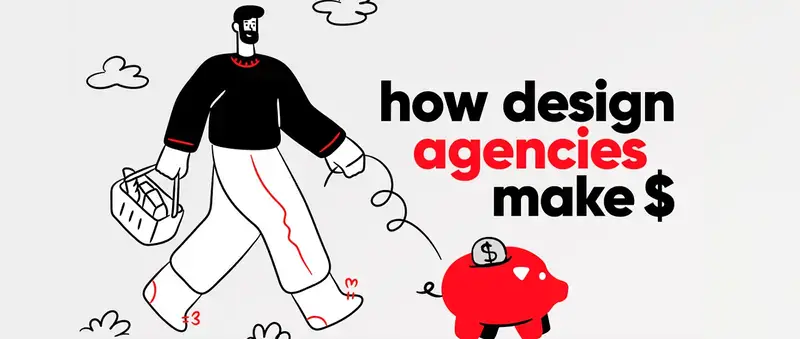
11. Essentials
This final section acts as a catch-all for any additional specific details that don’t fit neatly into the other categories. This could include:
- Personal preferences (for example, “The CEO loves minimalist design – avoid anything too busy.”)
- Must-have elements (for example, “The ad must include our new product tagline.”)
- Legal requirements (for example, “Include a disclaimer for medical claims.”)
- Cultural considerations (for example, “Avoid references that might not translate well internationally.”)
By capturing all these specifics, you ensure that the final creative work is not just great, but exactly what the client needs.
With all these elements in place, your creative brief will be clear, strategic, and ready to guide your project from start to finish. Let’s see now what the step-by-step process of writing an effective creative brief is.
What’s an effective way to write a strong creative brief, step by step
Now that we know what goes into an effective creative brief, let’s talk about how to actually write one. Oh, and if you’re wondering how long a creative brief should be, the answer is 1-2 pages. Here is how the process goes to create a brief that inspires, aligns, and keeps things moving.
1. Prepare the project’s summary and define the objectives
Start by outlining the project’s purpose in a way that anyone (clients, creatives, and stakeholders) can quickly grasp. In this step, you need to summarize the project in one or two sentences, then explain its purpose (the problem it solves and why it’s important for the brand) and define the objectives.
2. Specify the target market
Clearly define who the project is for and identify the primary (and secondary, if any) audience. Go beyond what we already mentioned and explain what drives them, how they interact with the brand, and why this project should matter to them (how it helps them). Being highly specific here makes it easier for creatives to tailor messaging and visuals that truly connect.
3. Outline the key message(s) and the brand guidelines
Define the key message the campaign or project should communicate and how it aligns with the brand’s positioning. Ensure consistency and recognizability by including brand guidelines, such as tone of voice, visual identity elements, and any must-use language. If specific words, phrases, or themes should be included (or avoided), now’s the time to document them.
4. Clarify the deliverables and their formats
List exactly what needs to be created. Include details about required formats, sizes, any required file types (JPEGs, PDFs, MP4s, GIFs, editable files for future adjustments), and technical specifications depending on the project type. Also, if it involves multiple assets, clarify how they should work together as part of a cohesive campaign.
5. Establish a budget and a timeline
Outline the project’s budget and expected timelines upfront. Be realistic about deadlines and factor in time for brainstorming, development, revisions, and approvals. If there are any critical launch dates or dependencies on external factors, highlight them.
A well-defined budget also ensures the creative team can make the right decisions on production quality, resources, and execution.
Timeline example:
- First draft due: April 20
- Stakeholder review period: April 21-23
- Final approval deadline: April 25
- Launch date: April 30
6. Specify the approval process and success metrics
Establish the approval process, identifying who needs to sign off on what and when, and how many revisions are included. A structured approval workflow prevents unnecessary delays and keeps projects moving forward efficiently.
Additionally, define KPIs (Key Performance Indicators) to show how success will be measured – whether through engagement metrics, conversion rates, brand awareness, or sales impact. Setting clear performance indicators helps align the creative work with business goals.
Bottom line
Writing the perfect creative brief doesn’t mean you’re just making a super cool document – you’re laying the foundation for a successful project. The best creative briefs provide enough detail to guide the process while leaving room for inspiration and creativity to thrive. So whatever you’re working on, bear in mind that taking the time to craft a solid brief will always pay off in the long run.
Well, now that you have what it takes to write an effective creative brief, it’s time to put it into action. You’ve got this!
Before you go, check out our other articles full of cool stuff and helpful advice:


![How to Write an Effective Creative Brief [+Examples & Free Template]](https://reallygooddesigns.com/wp-content/uploads/2025/04/how_to_write_an_effective_creative_brief.webp)
